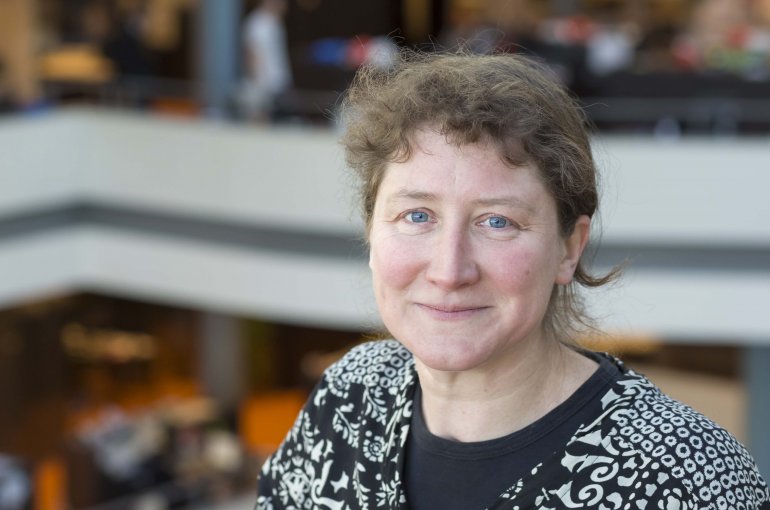Oration Petra de Jongh 16 September: Small is beautiful
How can you tame wind and sunlight?

In some aspects, fossil fuels are fantastic: they are easy to transport and store, and you can use them at any time. Solar and wind energy are not as simple. “I dream of making solar and wind energy as useful as fossil fuels”, says Petra de Jongh, Chair of Inorganic Nanomaterials. In her inaugural lecture on 16 September, she will explain why renewable energy can be cumbersome, and how she is doing her best to change that.
Ideally, we would completely replace fossil fuels and raw materials with renewable sources, but it is not as simple as that. “You can use oil and coal at any time”, De Jongh explains, “But you cannot simply say: we need three hours of sunlight right now.” So she conducts research into ways to store solar and wind energy. That is easy in a laboratory, but it is not yet feasible at a larger scale under real-world conditions. “That is a major challenge: how can you tame the wind and sunlight?”
Beehive
De Jongh studies ways to store electricity generated by wind or sunlight in batteries or in the form of hydrogen, but she would also like to make other fuels and chemical building blocks in a more sustainable manner. Crucial are catalysts that can combine molecules such as hydrogen, carbon monoxide and carbon dioxide into larger molecules. “In a certain sense, you can compare a catalyst with a beehive”, adds De Jongh. “The active catalyst particles are like bees in a beehive - a porous structure that sometimes even ressembles a honeycomb structure. I do not only want to design the bees; I also want to design the beehive and the way the bees interact.”
Nano-scale precision
To that end, De Jongh designs and assembles catalysts with nano-scale precision: 1/10,000th the width of a human hair. It is not easy to study these particles: they are much smaller than the wavelength of light, so visualizing them require advanced equipment. But with inisght into the preparation process, these particles are surprisingly simple to make. “I want to understand the properties of these particles, especially those that consist of several different components”, says De Jongh. “I look forward to working on this more with my team over the next few years,.”
Oration
Prof. Petra de Jongh will give her inaugural lecture, “The power of small things”, in Utrecht University’s University Hall at 16:15 on 16 September 2016.

